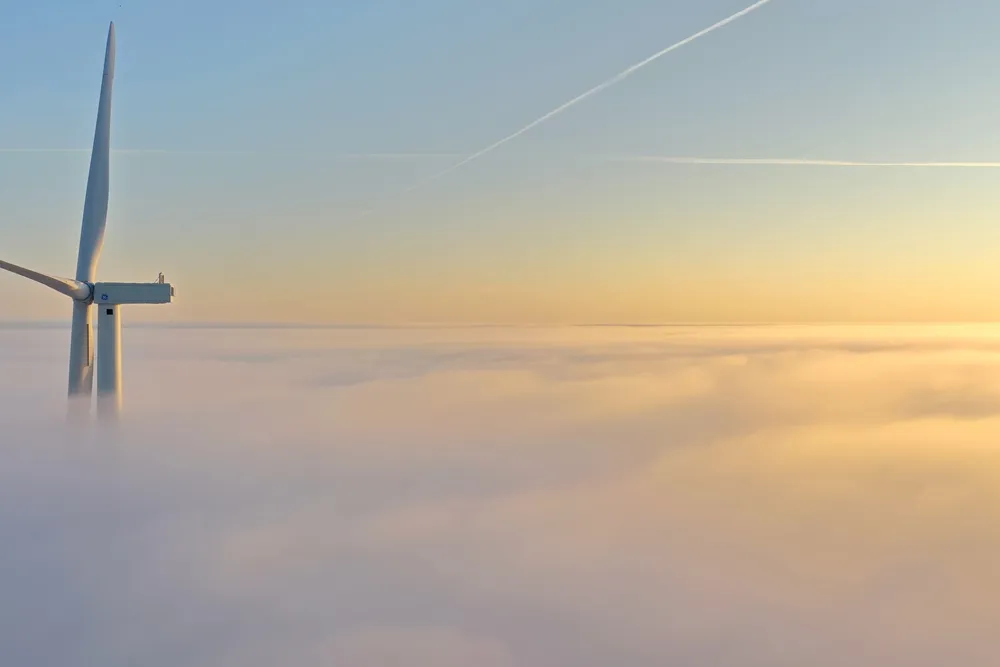Emerging from the clouds: can German wind wave help US turbine maker to better times?
GE Vernova's long road back to a profitable wind business is gaining tractions in key markets

GE Vernova’s long battle to return its wind turbine business to profitability may have curtailed some of the manufacturer’s former ambitions, but the US company is still gunning for growth in targeted markets, with Germany at the top of this list, according to one of its senior executives.
Germany earned a chorus of praise from industry leaders taking part in the Husum Wind event in Germany this week, and one of them was Gilan Sabatier, chief commercial officer for GE Vernova’s onshore wind business in international markets.
“Germany is the leading student in the European classroom,” he said.
“Two years ago there was an intense debate about the things that were holding us back. This was mainly about permits but also about demand. The whole of Europe can now look at Germany as an example to address such issues.”
These sentiments were echoed by OEM peers from Vestas, Nordex and Enercon who were taking part in a panel on wind energy’s role in providing energy security in Europe.
Germany’s efforts to streamline its permitting system for onshore wind were held up as an example of success.
The new system is now underpinned by a federal German law that requires 2% of the country's landmass to be reserved for the development of onshore wind as a key source of new energy.
The law designates renewable energy projects as being of "overriding public interest," prioritising them in permitting and simplifying environmental approvals.
“The number one lever for OEMs is predictability. You need scale before you can look to ramp up in terms of capital expenditure because ours is a long-cycle infrastructure business that works with long-term signals,” Sabatier told the panel.
“Why is Germany ahead? Because it set out its intentions but also worked on the execution, aligning national decision-making with that intent,” he added.
GE Vernova, which was spun out of US behemoth General Electric in April 2024, is looking to markets such as Germany for overall wind industry growth as prospects in the US become more uncertain.
The company has a turbine manufacturing facility at Salzbergen where it has leaned on its “workhorse product strategy” – offering high levels of reliability, standardisation and availability – to strengthen profitability.
New deals
Two more orders for these onshore workhorse turbines were announced in Germany this week, on the small-scale wind farms that proliferate in the German countryside.
The first was an agreement with Prokon Regenerative Energien to repower a wind farm in the Sachsen-Anhalt region with eight 6MW-164-metre machines. The second was to supply seven such units for Enertrag’s Bonacker wind farm in Nordrhein-Westfalen in western Germany.
"We have one of our largest manufacturing facilities in Salzbergen. We have a European supply chain to serve the market, and long-standing customer relationships. So, we have bold ambitions to continue to grow in this space and the market has massive tailwinds for us.
"If you give us enough time and you're predictable enough with policy, there's no limit to how much we can scale."
GE Vernova’s broader problems with its wind business go back to the post-pandemic years, when surging borrowing costs and supply chain inflation hit a raft of contracts still in the execution phase, causing heavy losses.
In its long quest to recover profitability the company has curtailed new business in the offshore wind sector, and pulled back from certain markets, such as Brazil, while focusing on core targeted markets and using its workhorse strategy rather than chasing new product lines.
Grounding its business on workhorse products in a growing and stable market like Germany goes to the heart of a strategy that GE Vernova has pursued to recover profitability.
"One thing that's clear at every customer meeting I go to is that the strategy around our workhorse product is working,” Sabatier said.
"Customers relate to it. They understand that we need to not just put up megawatts, but actually have the megawatt hours."
But it is wrong to see the company as in retrenchment mode, Sabatier added.
"We want to grow and be a meaningful player in Europe and in the rest of the world. We have strong ambitions in places like India, Japan and Australia, and these are unchanged."
In Europe, he added that Spain, like Germany, remains an attractive market for the company, and he also reported "good commercial traction" for the company's products in Italy and France, pointing to likely new deals in those countries.
Sabatier described increasingly strong momentum for the company in Eastern Europe.
"It can be more unpredictable, but there is incredible momentum in places like Romania," he said, adding that the company is eying a strong market share when the results of two auction rounds offering multiple gigawatts are announced there.
GE Vernova has not stopped investing in onshore wind and opened a new factory in India earlier this year, where it has 5GW of wind installed in-country and recently launched a new turbine model.
Asked if Germany is also the kind of market that could attract a new cycle of investment, Sabatier answered that the company "will do what it takes to be successful and it is the market that will tell us how much of that we need to do".
"We continue to evaluate product investments, industrial supply chain investments in our normal course of business. If and when we'll do that, we'll announce it," he said.
Similarly Sabatier said it was "too early to tell" if the company would launch new platforms.
"Every OEM is thinking about what's the best product in the market. The real question is prioritisation and timing," he said, referring to an interplay between objectives ranging between size, demand, maturity of the supply chain and quality that can be underwritten".